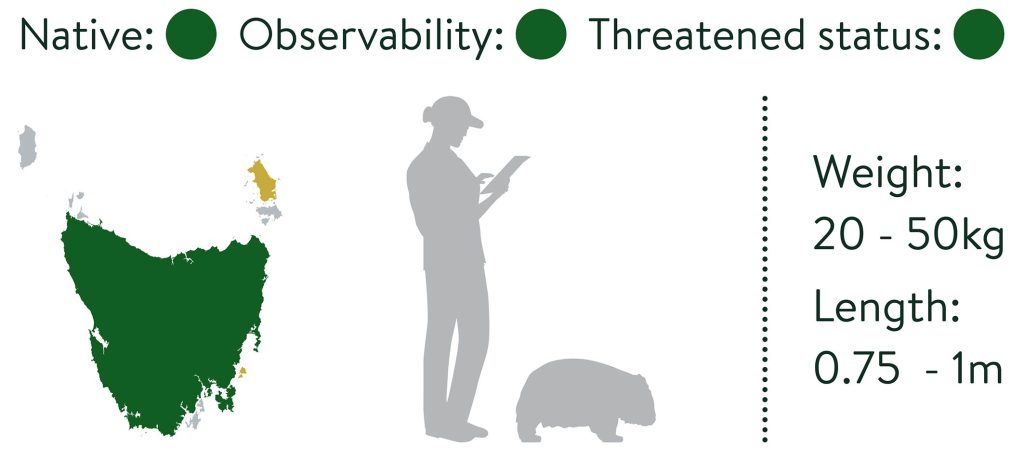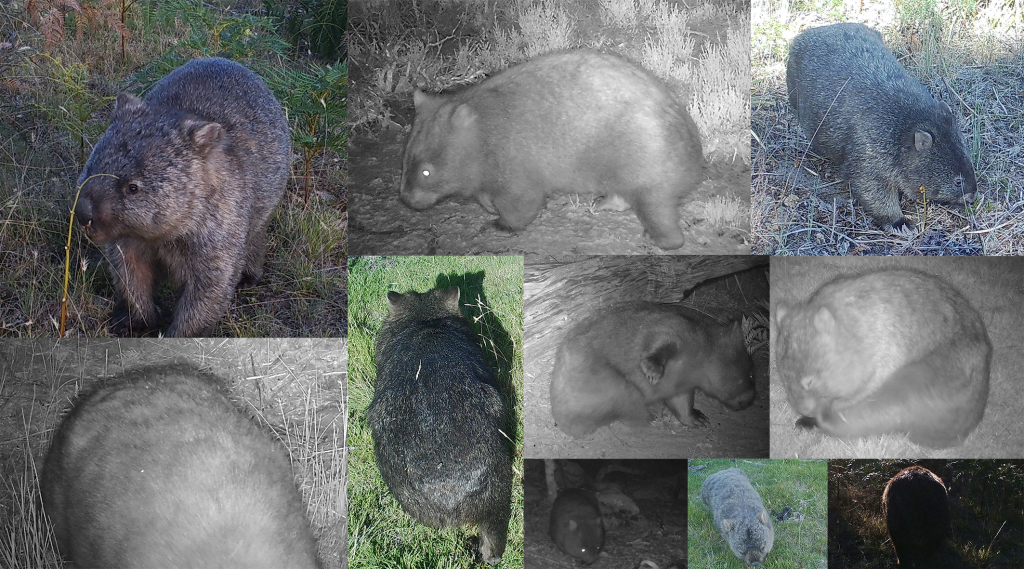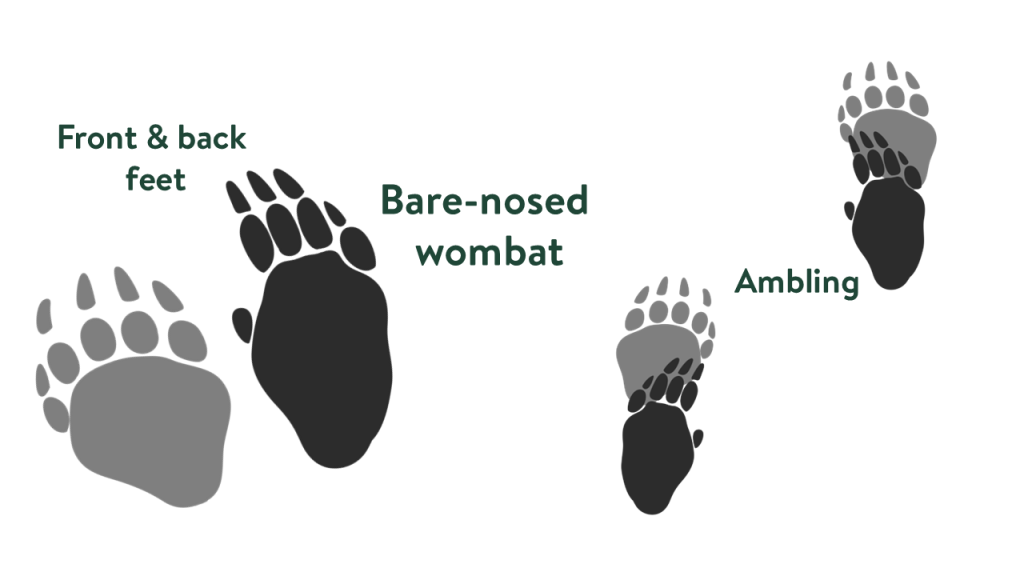Vombatidae | Vombatus ursinus
Tasmania is home to two of the three subspecies of bare-nosed wombat; V. u. tasmaniensis occurs on mainland Tasmania and V. u. ursinus is now restricted to Flinders Island and Maria Island where they were translocated in the 1970s (extinct on King). Tasmanian wombats are smaller than their mainland counterparts. But did you know that GIANT wombats once roamed the Australian continent? Phascolonus gigas weighed between 100 and 250 kg and lived as recently as ~40,000 years ago.

Lifestyle
Wombats are primarily nocturnal creatures, but in Tassie, they can often be spotted out and about during daylight hours. During the day, they seek shelter in burrows, which can range from a simple hole in the ground to an intricate underground tunnel system. One wombat may regularly use multiple burrows (average 13) and even share burrows with their neighbours (though usually not at the same time!). Wombats are thick-skinned, particularly on the rump. This, and a broad plate of bone and muscle, offers them protection from predators when taking cover in a burrow or “bolthole”, sealing the entrance using their bottoms. While wombats may look lackadaisical, they can reach an incredible top speed of 40km per hour if needed. Home ranges can vary significantly in size but one study found that wombats roamed an average of 17 hectares with a core area of use typically around three hectares. A study of Victorian wombats also found that males moved approximately 833 metres every night, while females moved around 500 metres. Wombats can breed at any time of year. Joeys leave the pouch when they are around six months old and weigh approximately three kilograms, but they only leave their mother’s watchful eye at about 18 months.

Key identifying features
Big, round, and stocky with short legs. Large ‘bare’ nose. Small eyes relative to head-size. Range of coat colours from black to blonde but most commonly a dark brown. Backward facing pouch.
Similar species
None.
Habitats
Bare-nosed wombats prefer more temperate climates and are known to inhabit a diverse range of habitats, including alpine ecosystems, forests and grasslands. They are most commonly found in agricultural areas, where food is abundant, and in dry eucalypt woodlands.
Diet
Wombats are grazers – 95% of their diet is grasses.
Threats
Wombats have seen large range contractions in Victoria and New South Wales and have disappeared from many of the Bass Strait Islands. Localised outbreaks of sarcoptic mange pose a threat to isolated populations. Mange is a type of skin disease caused by mites (Sarcoptes scabiei), leading to secondary infection and eventually the animal’s death. Wombats are also at risk of road collisions, must compete with rabbits for food, and are sometimes culled by farmers because of the damage they can cause to pastures and fencelines (please check out our land management guide for advice on constructing ‘wombat gates’😉).

